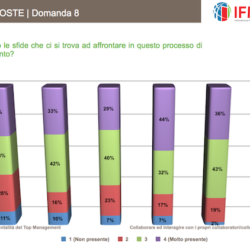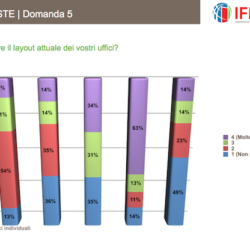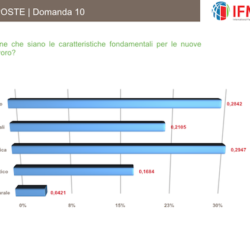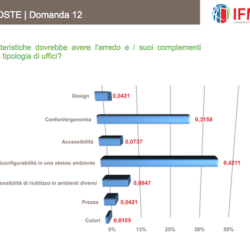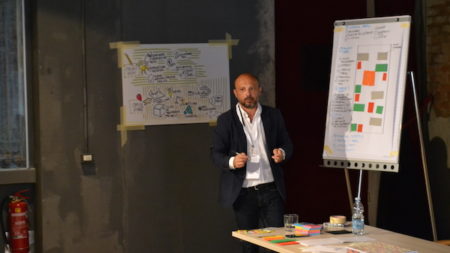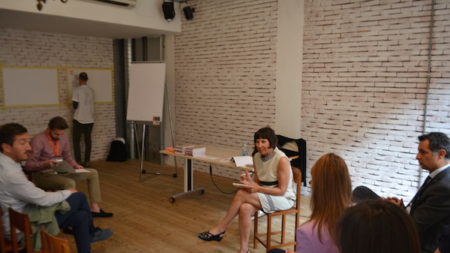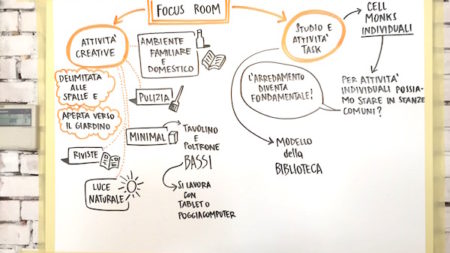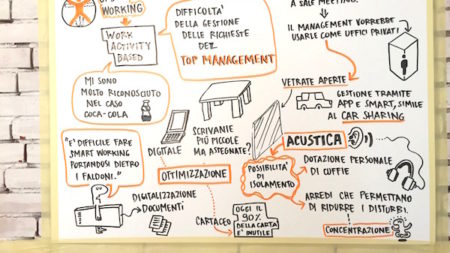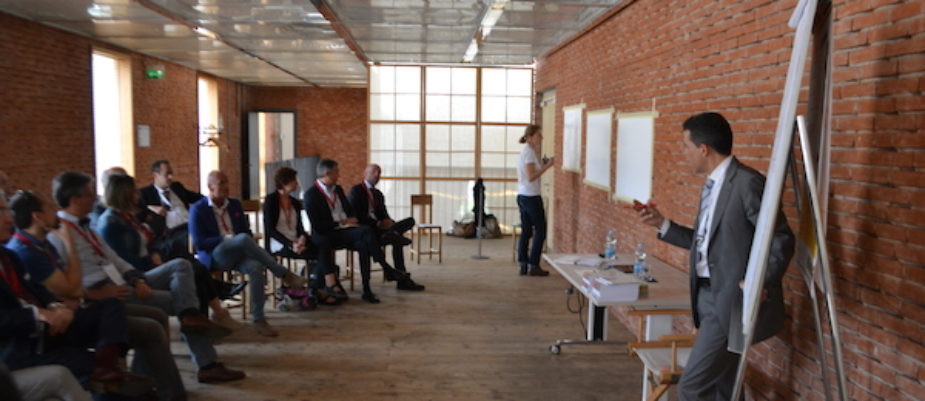
Here is a synthesis of the most significant data of the study organized by Sedus and IFMA Italia and the concepts that have emerged in the three workshops at Teatro Parenti. The workshop proved there isn’t just one effective formula for Smart Working furniture.
A few interesting data come out from Maria Antonietta Lisena’s research:
Those areas considered as strategically important, which a company should introduce to implement Smart Working, are mostly rooms meant for small groups or a concentrated effort:
Focus Room 43% followed at a distance by the Project Area (15%) the enclosed or semi-enclosed Meeting Room (14%) and Informal Meeting areas(11%).
The basic features of Smart Working areas are:
Technological Equipment (29%) and proximity to the workplace (28%) followed by “Pleasantness and Practicality (21%) and Acoustic Comfort (17%), strange enough, little importance is attached to Natural Lighting (4%).
About the features of furniture meant to meet the requirements of Smart Working, all opinions agree on:
Flexibility and possible Reconfiguration (42%), Comfort/Ergonomics (32%) and, unexpectedly, only 4% of Facility Managers considers costs as determinant! Will people in charge of purchases agree on this, too?
The concepts that have emerged during the three workshops were also enlightening, as they also involved the Facility Managers, to get an accurate picture of the level of satisfaction and understand how to improve it.
The percentages, explained by Alessandro Adamo, (see also the article “Space, People, Technology”) related to the average presence in the office (50%) 25% of which inside meeting rooms, confirm the importance of common spaces, as well as of the additional ones, like the Dockers, enabling to have one’s personal belonging always near at hand.
The most requested areas are:
Informal meeting rooms, that can “change people’s mood”: break areas meant as “places where you do a job” but also as a “Piazza” to meet and exchange views, even with the top management; the project areas, rooms for 4/6 people doing temporary jobs. Besides private spaces, like the phone booths.
What features should these areas have?
Stefano Anfossi answered this question. The Informal Meeting rooms should be widespread, naturally lit, transparent, not just large windows, but also with adjustable screens.
The Project Areas have to be barycentric to the building, to stimulate creativity and allow people to express themselves freely.
Office and Meeting spaces should have always different features and give people the possibility of choosing and using them to isolate themselves, but also to see what’s going on around them.
The Focus Areas should meet the need to cut oneself off to concentrate, not necessarily closed, but where you can be on your own even among other people, like in a library.
Finally, the need for coffee areas is very real, defined by some people the real heart of Smart Working.
As regards the fitting out of these areas, summed up by Renata Sias , the picture is quite diversified.
Every company has to express its identity through the furnishings, but also to meet the smart workers’ needs. Maximum flexibility, multipurpose, reconfiguration and lightness (physical and even aesthetical), combined with a variety of typologies each time meeting different requirements.
Maximum personalization is a must: not just an adjustable chair, but also height-adjustable desks and customized lighting.
Also requested, the integration with technologies in furniture units: for example, one badge only to open drawer units and Dockers, use of headphones, touch-screen booking of the meeting room, worktops recharging the different devices.
Large bench-tops with a few legs to optimize the space, for flexibility means most of all to move people and not furniture. Taking for granted the digitized files, because “it’s impossibile to do smart working if you have to move folders of papers”.
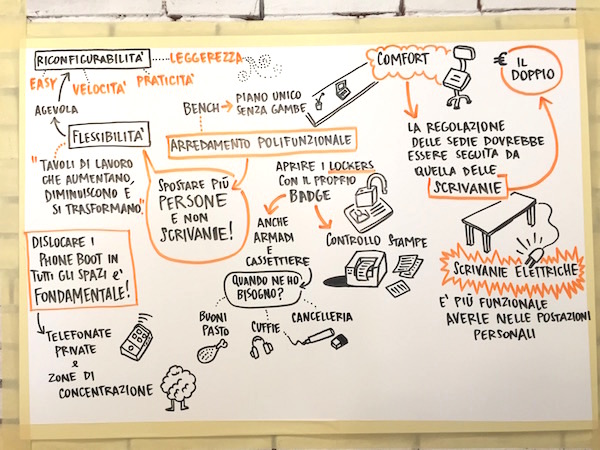
The large sheets on the wall of the theatre summing up the concepts that have emerged in the workshop on the features of furnishings meant for smart working environments, conducted by Renata Sias.

